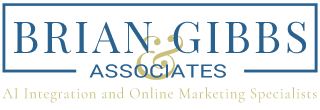Maximizing Your Local Business Digital Marketing ROI
Maria, a local business owner, ran a little bakery in the downtown area. She needed help competing with other local bakeries and online retailers. She was concerned about her company’s performance and came to me for digital marketing advice.
I met with Maria and reviewed her company objectives. We discussed the need to define specific ROI targets, and I showed her how to construct SMART (specific, measurable, achievable, relevant, and time-bound) goals. We established a plan for Maria to grow website traffic by 20% in the next three months and sales by 15% in the following six months.
Identifying Your Target Audience
 The second step to maximizing local business digital marketing ROI efforts is identifying a target audience. We spoke about how important it is to understand Maria’s consumer demographics and how to use data to target efforts better. I recommended she use tools like customer relationship management (CRM) software and surveys to collect data about his customers. By understanding the age, gender, income, and other characteristics of his target audience, we were able to create more effective ads and reach the people most likely to make a purchase.
The second step to maximizing local business digital marketing ROI efforts is identifying a target audience. We spoke about how important it is to understand Maria’s consumer demographics and how to use data to target efforts better. I recommended she use tools like customer relationship management (CRM) software and surveys to collect data about his customers. By understanding the age, gender, income, and other characteristics of his target audience, we were able to create more effective ads and reach the people most likely to make a purchase.
Choosing the Right Platforms
I emphasized to Maria that not all digital marketing platforms are the same and that some are more suited for small companies than others. I recommended platforms such as Facebook and Instagram, which are great for reaching local audiences, and Google Ads, which can be pricier upfront but highly effective for reaching people searching for baked goods like hers. We discussed the importance of choosing the right platforms to save money and get results.
Optimizing Your Campaigns
Once we identified Maria’s target audience and platforms, we discussed the importance of optimizing her campaigns for maximum ROI. I explained the importance of creating compelling ad copy, using A/B testing to improve results, and using tools and resources for tracking her digital marketing ROI. Maria was eager to experiment with different ad copy and use A/B testing to see which ad performed better. She also tracked her ROI and made data-driven decisions to optimize her advertising using tools like Google Analytics and SEMrush.
Measuring and Analyzing Results
 To truly maximize ROI, it’s essential to be able to measure and analyze results. I stressed the significance of knowing key performance indicators (KPIs) and leveraging data to better future campaigns to Maria. We discussed the importance of tracking metrics such as click-through rate (CTR), conversion rate, and cost per conversion. By analyzing this data, Maria could make informed decisions about improving his digital marketing efforts and maximizing his investment.
To truly maximize ROI, it’s essential to be able to measure and analyze results. I stressed the significance of knowing key performance indicators (KPIs) and leveraging data to better future campaigns to Maria. We discussed the importance of tracking metrics such as click-through rate (CTR), conversion rate, and cost per conversion. By analyzing this data, Maria could make informed decisions about improving his digital marketing efforts and maximizing his investment.
In conclusion, by following my advice, Maria was able to level the playing field and increase her ROI as a local bakery. She set clear goals, identified her target audience, chose the right platforms, optimized his campaigns, measured and analyzed her results, and continuously made data-driven decisions. By doing so, she brought in more customers and grew her business.
Local Business Digital Marketing ROI FAQs

Q: What is the average ROI on digital marketing?
A: The typical ROI on digital marketing varies substantially based on the type of organization, sector, and strategies employed. However, small firms may generally expect a return on investment (ROI) of 300-400% on their digital marketing spending. This means that companies should expect a $3-$4 return on every dollar invested in digital marketing. However, this can vary substantially depending on the sector and exact techniques employed. Therefore it’s advisable to talk with an expert and measure your own ROI to obtain a more realistic picture.
Q: How do you calculate ROI for a small business?
A: To calculate ROI for a small business, you will need to follow a few basic steps:
- Determine the cost of the marketing campaign: This includes all expenses associated with the campaign, such as ad spend, labor, and production costs.
- Determine the revenue generated from the campaign: This includes any additional sales or revenue that can be directly attributed to the marketing campaign.
- Calculate the ROI: Subtract the cost of the campaign from the revenue generated, and then divide that number by the price of the campaign. Multiply the result by 100 to get the ROI percentage.
ROI = (Revenue – Cost) / Cost x 100
For example, if a small business spent $10,000 on a marketing campaign and generated $15,000 in additional revenue, the ROI would be: ROI = ($15,000 – $10,000) / $10,000 x 100 = 50%
This means that the business saw a 50% return on investment for that specific campaign. Tracking your ROI over time is essential to get a good sense of how your marketing efforts impact your business. And it’s also good to compare the ROI of different marketing strategies, channels, and campaigns to decide where to invest your budget.
Q: What are ROI and KPI in digital marketing?
A: ROI (Return on Investment) and KPI (Key Performance Indicator) are two critical metrics for determining the efficacy and success of digital marketing efforts.
ROI is a financial term that calculates a campaign’s or project’s return on investment. It compares the money gained to the expenditures invested in measuring the efficiency and profitability of a campaign. ROI is typically expressed as a percentage and is calculated using the formula:
ROI = (Revenue – Costs) / Costs
On the other hand, KPI is a performance metric that measures the success of a campaign in relation to a specific goal or objective. KPIs help evaluate a campaign’s performance by tracking specific metrics such as website traffic, lead generation, conversions, and revenue. These metrics provide insight into how well a campaign is performing and can be used to optimize and improve future campaigns.
ROI and KPI work together to give a complete perspective of a campaign’s effectiveness and to assist organizations in making data-driven choices regarding their digital marketing initiatives.

